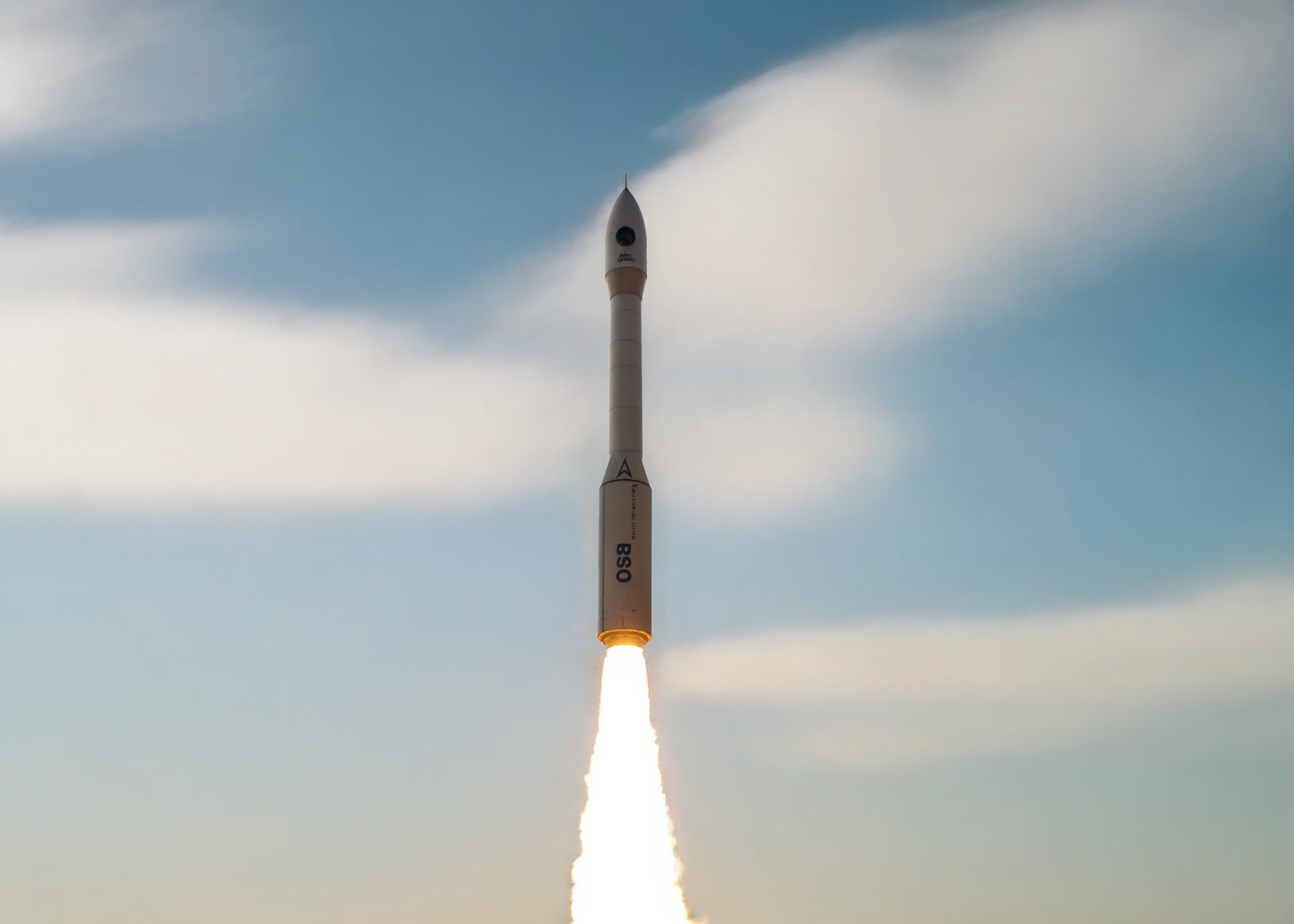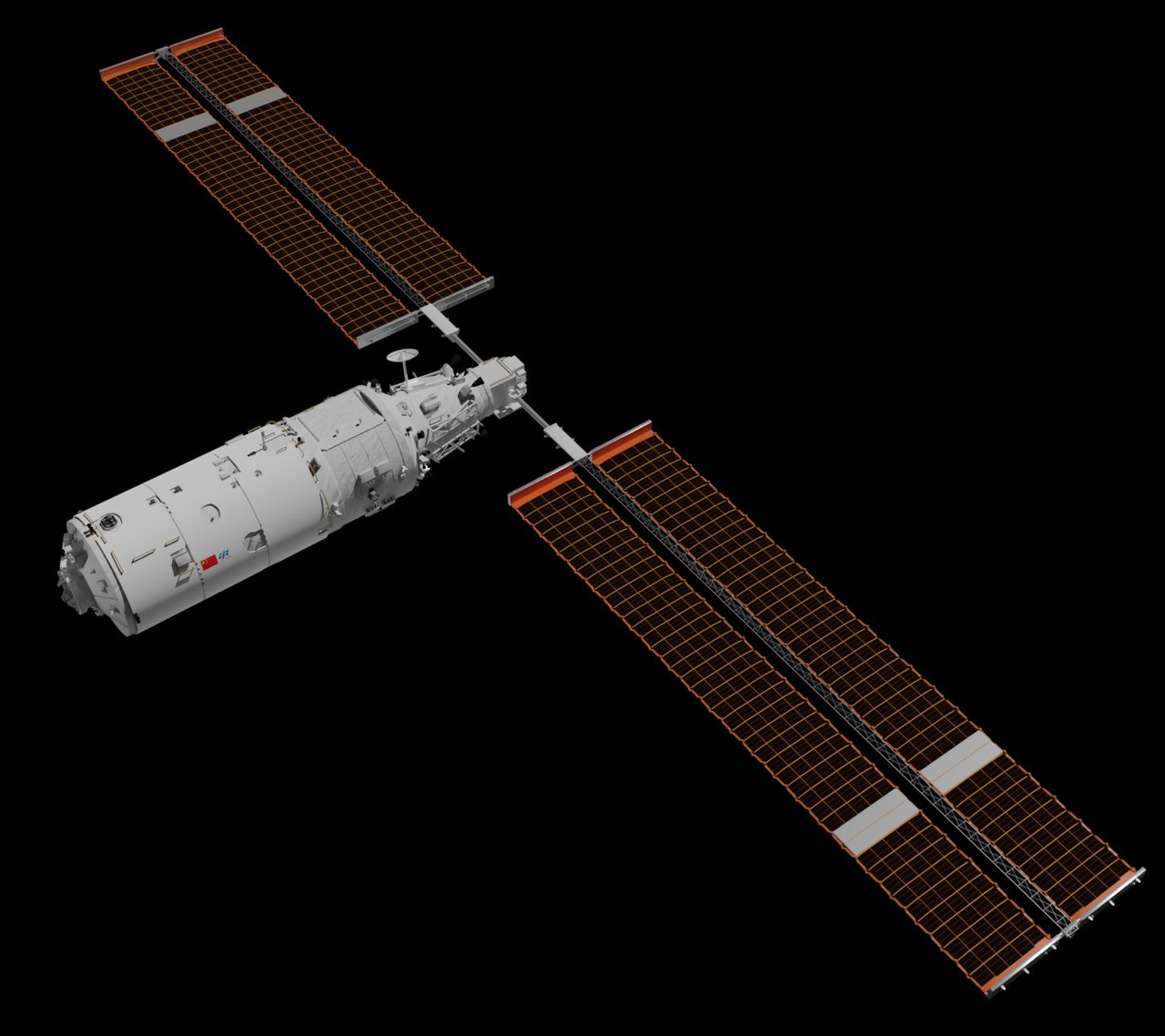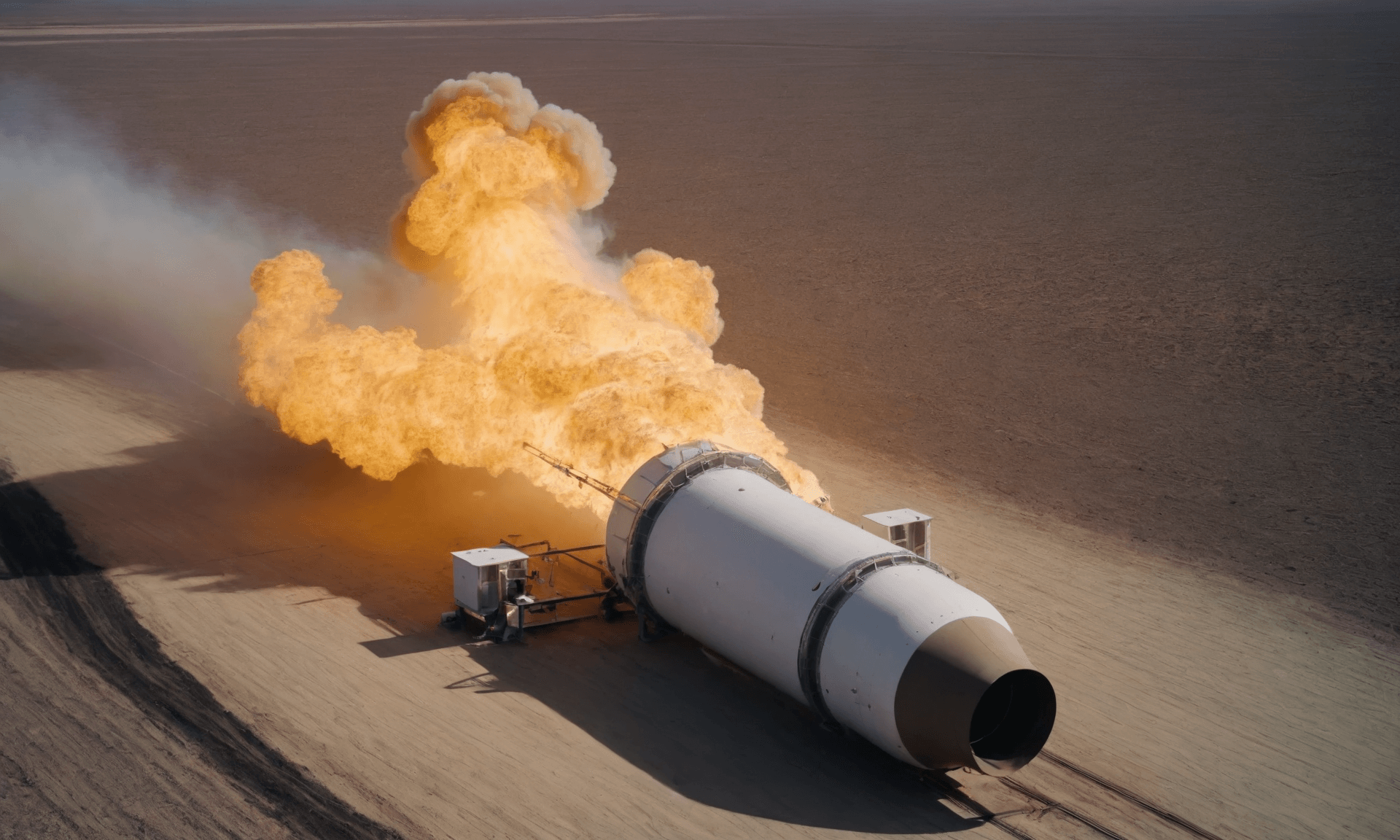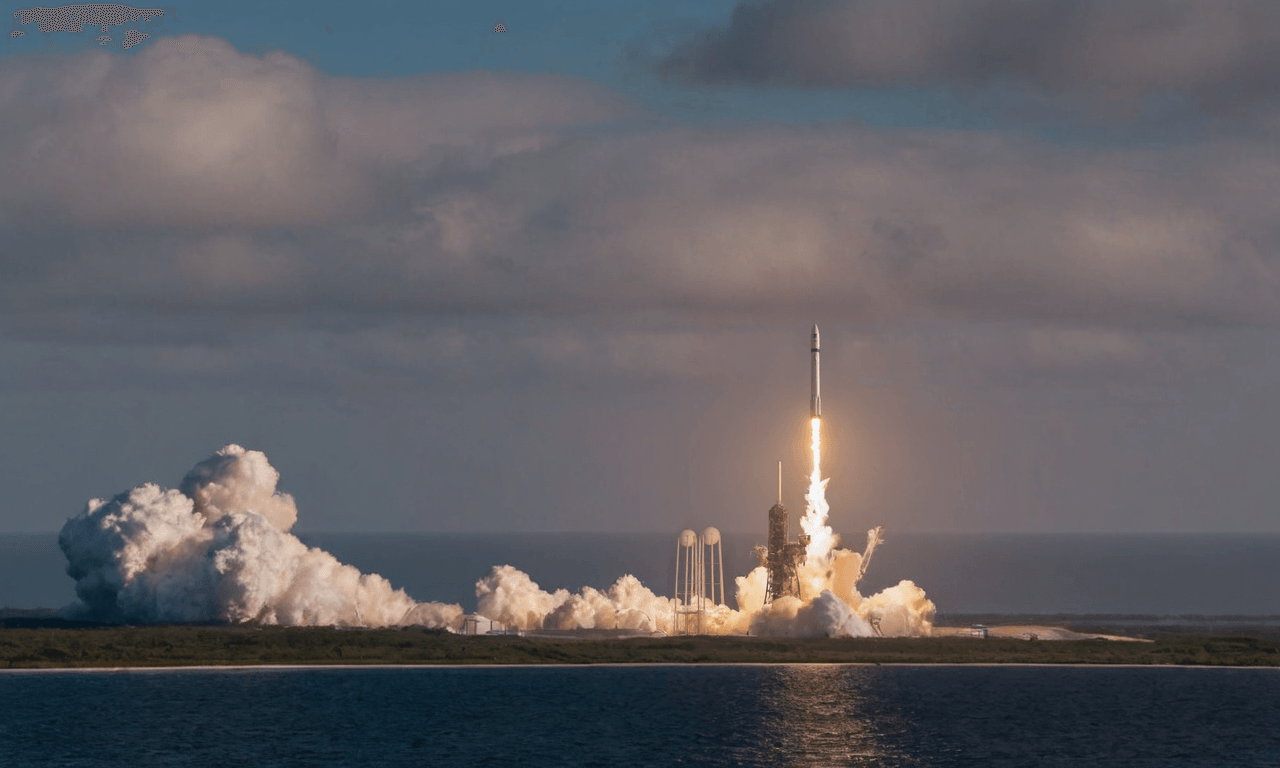· space brief · 7 min read
Space Brief 5 Sep 2024
Today we cover the final launch of Vega's original version, a significant milestone for SpaceX with the U.S. military, preparations for NASA's Starliner return, and more.

📄Top Stories
The final flight of the original Vega rocket successfully placed the Sentinel-2C Earth observation satellite into orbit. Meanwhile, SpaceX achieved its first laser data exchange for the U.S. military with its Tesat terminal-equipped satellites. NASA is prepping for the return of the CST-100 Starliner spacecraft, and the Space Force unveiled a plan to acquire smaller, more cost-efficient satellites to bolster the GPS network.
📰Detailed Coverage
Final Flight of the Original Vega Rocket
In a historic event, the final flight of the original version of Europe’s Vega rocket concluded successfully with the launch of the Sentinel-2C satellite on September 4. This marks the end of an era for the Vega rocket, utilized extensively for launching small to medium-size satellites into orbit since its inception.
Sentinel-2C will join the Copernicus family to provide critical Earth observation data. Its successful deployment signifies continued commitment to environmental monitoring and sustainable development. You can track the other Sentinel satellites on our web app.
Read the full story: ESA
SpaceX Achieves First Laser Data Exchange for U.S. Military
SpaceX has reached a significant milestone by achieving the first laser-based data exchange for the U.S. military using optical terminals from Tesat. This advancement demonstrates the capability of secure, high-speed communication in space, aligning with military standards and showing promise for future defense applications.
The implementation of such technology represents a leap in satellite communications, enhancing data security and transmission speed. These capabilities can be monitored and tracked via our web app’s military satellite section.
Read the full story: SpaceNews
NASA Prepares for Starliner Return from ISS
NASA is gearing up for the return of Boeing’s CST-100 Starliner spacecraft from the International Space Station. This mission is critical as it will allow NASA to implement necessary changes identified during the test flight, ensuring the spacecraft’s readiness for future crewed missions.
The upcoming reentry will provide valuable data to refine spacecraft systems. Follow Starliner’s journey and other reentries on our real-time satellite tracking platform.
Read the full story: SpaceNews
Space Force Pushes for Smaller, Cheaper Satellites to Reinforce GPS
Facing skepticism from Congress, the Space Force is advocating for a new initiative named “Resilient GPS,” which aims to incorporate smaller, cost-effective satellites to augment the existing GPS constellation. This strategy seeks to enhance resilience and reliability of global positioning services.
Smaller satellites present opportunities for quicker deployment and reduced vulnerability. Keep an eye on these new additions via our satellite tracker to see how they integrate with the current GPS network.
Read the full story: SpaceNews
🛰️Satellite Spotlight
- Satellite Name: YAOGAN 20B
- NORAD ID: 40110
- Launch Date: 2014-08-09
- Mission: Earth Observation and Intelligence
- Orbit: Inclination: 63.3839°, Period: 107.04 minutes, Eccentricity: 0.0331917
- Operator: Strategic Support Troops, China
- Fun Fact: Yaogan 20B is part of a triplet mission, launched alongside Yaogan 20A and 20C, aimed at providing high-resolution imaging capabilities.
Current TLE Data:
1 40110U 14047B 24238.88599310 -.00000007 00000-0 10133-3 0 99993
2 40110 63.3839 281.4375 0331917 11.4042 349.4271 13.45314501493447
Track this satellite in real-time on our web app: Track YAOGAN 20B
🗑️Space Debris Update
Current tracked debris objects: 14002
Notable recent events
- Amateur Scientist Project: An intriguing new project guide on Make: DIY Projects showcases how amateur scientists can use a twilight photometer to detect micrometeors and space debris. This tool can track tiny particles of cosmic dust and orbital junk up to 400 miles high, providing a unique opportunity for citizen scientists to contribute to the understanding and monitoring of space debris.
📄 Amateur Scientist: Detect Cosmic Dust & Space Debris
Explore our web app for more detailed information and real-time tracking capabilities for satellites and other orbital objects.
🚀Upcoming Space Launches
September 5
SpaceX Falcon 9 Block 5 | Starlink Group 8-11 from Space Launch Complex 40, Cape Canaveral, FL, USA (12:35 UTC) A batch of 21 satellites for the Starlink mega-constellation - SpaceX’s project for space-based Internet communication system.
China Aerospace Science and Technology Corporation Long March 6 | Unknown Payload from Launch Complex 16, Taiyuan Satellite Launch Center, People’s Republic of China (18:20 UTC) Details TBD.
September 6
- SpaceX Falcon 9 Block 5 | NROL-113 from Space Launch Complex 4E, Vandenberg SFB, CA, USA (03:20 UTC) Third batch of satellites for a reconnaissance satellite constellation built by SpaceX and Northrop Grumman for the National Reconnaissance Office to provide imaging and other reconnaissance capabilities.
September 7
- SpaceX Falcon 9 Block 5 | Polaris Dawn from Launch Complex 39A, Kennedy Space Center, FL, USA (07:38 UTC) First mission of the privately funded Polaris program. The goal of this mission, lasting up to five days in orbit, is to fly higher than previous Dragon missions, perform the first-ever commercial EVA with SpaceX-designed spacesuits, orbit through portions of the Van Allen radiation belt, conduct medical research, and test laser-based Starlink communications in space.
September 11
Mitsubishi Heavy Industries H-IIA 202 | IGS Radar 8 from Yoshinobu Launch Complex LP-1, Tanegashima Space Center, Japan (04:00 UTC) The IGS Radar 8 is a Japanese radar reconnaissance satellite. The satellite is operated by the Cabinet Satellite Information Center. The satellite serves both Japan’s national defense and civil natural disaster monitoring.
Russian Federal Space Agency (ROSCOSMOS) Soyuz 2.1a | Soyuz MS-26 from 31/6, Baikonur Cosmodrome, Republic of Kazakhstan (16:23 UTC) Soyuz MS-26 will carry two cosmonauts and one astronaut to the International Space Station aboard the Soyuz spacecraft from the Baikonur Cosmodrome in Kazakhstan.
September 12
- SpaceX Falcon 9 Block 5 | BlueBird Block 1 from Space Launch Complex 40, Cape Canaveral, FL, USA (08:52 UTC) First five satellites for SpaceMobile’s cellphone-compatible broadband constellation.
September 15
SpaceX Falcon 9 Block 5 | Galileo L13 (FOC FM26 & FM32) from Space Launch Complex 40, Cape Canaveral, FL, USA (22:48 UTC) Two satellites for Europe’s Galileo navigation system. Originally planned for launch on Soyuz-ST and then Ariane 6 but both were unavailable.
Galileo provides Europe with an alternative to the American GPS and Russian GLONASS constellations, but will be interoperable with both systems.
September 16
- Rocket Lab Electron | Kinéis Killed the RadIoT Star (Kinéis 6-10) from Rocket Lab Launch Complex 1B, Onenui Station, Mahia Peninsula, New Zealand (23:01 UTC) Second batch of five satellites for the French Kinéis IoT constellation designed to operate with 25 nanosatellites of 30 kg each.
Note: Launch dates and times are subject to change due to technical or weather considerations.
💡Did You Know?
The Vega rocket, which just completed its final flight in its original configuration, was named after the brightest star in the constellation Lyra. Vega has been a crucial part of Europe’s space program since its first launch in 2012, specializing in carrying smaller payloads to low Earth orbit. Over its operational lifetime, Vega has launched over 50 satellites for various scientific, Earth observation, and commercial missions. The rocket’s successor, Vega-C, is designed to offer increased performance and payload capacity, continuing the legacy of its namesake in illuminating our understanding of Earth and space.
🔬Technical Corner
Optical Inter-Satellite Links (OISL)
Optical Inter-Satellite Links (OISL) represent a cutting-edge technology in satellite communications, utilizing lasers for data transmission between satellites. This technology, as demonstrated in SpaceX’s recent achievement with the U.S. military, offers several advantages over traditional radio frequency (RF) communications.
Key aspects of OISL technology include:
High Data Rates: OISLs can achieve data transfer rates of several Gbps, significantly higher than RF systems.
Improved Security: The narrow beam width of lasers makes interception extremely difficult, enhancing communication security.
Reduced Interference: Unlike RF, optical communications are not subject to electromagnetic interference or spectrum licensing issues.
Lower Power Consumption: Laser communications typically require less power than RF systems, crucial for satellite longevity.
Decreased Latency: By enabling direct satellite-to-satellite communication, OISLs can reduce the need for ground station relays, potentially decreasing overall network latency.
Challenges in implementing OISL include precise pointing and tracking requirements, as well as the need for specialized optical components capable of withstanding the harsh space environment. Despite these challenges, the benefits of OISL make it a promising technology for future satellite constellations, particularly for applications requiring secure, high-bandwidth communications in space.
As this technology becomes more prevalent, it will likely revolutionize satellite networking, enabling more efficient global communication systems and expanding the capabilities of Earth observation and defense satellites. The successful implementation of OISL in military applications, as seen in the recent SpaceX demonstration, marks a significant step forward in the evolution of space-based communication systems.




